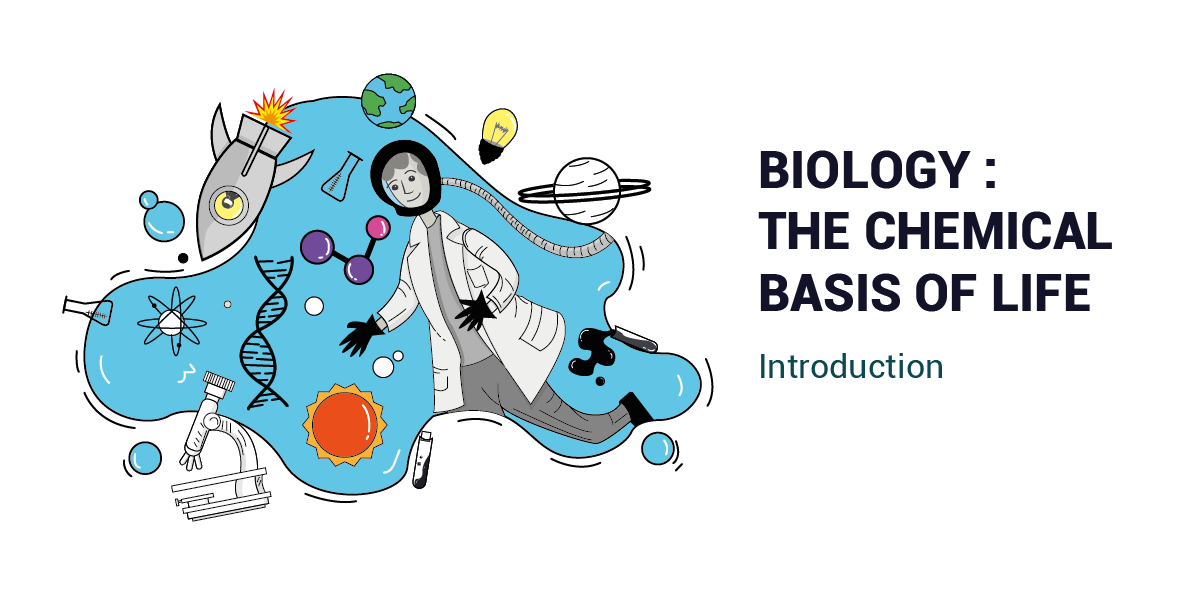The Chemical Basis of Life
All living things are built from a complex network of chemical compounds. Understanding these chemicals and their interactions is fundamental to the field of biology. Here's a breakdown of the key concepts:
Elements: The Building Blocks
- Abundant Elements in Life: Life is primarily built on a relatively small set of elements. The most abundant elements in living things are carbon (C), hydrogen (H), oxygen (O), nitrogen (N), phosphorus (P), and sulfur (S).
- Why Carbon? Carbon is the backbone of life. Its unique ability to form four stable bonds allows it to create long, complex chains and diverse molecular structures. This gives rise to the biomolecules essential for life.
Water: The Elixir of Life
- Properties of Water: Water (H2O) possesses unique properties that make life possible:
- Polarity: Water's polarity allows it to dissolve many substances essential for life processes, making it a great solvent.
- Cohesion and Adhesion: Water molecules stick together (cohesion) and to other surfaces (adhesion) which contributes to processes like the transport of water in plants.
- High Heat Capacity: Water moderates temperature, helping organisms maintain homeostasis.
- Density of Ice: Frozen water (ice) floats, insulating bodies of water for life beneath the surface.
Macromolecules: The Essential Molecules of Life
Living organisms rely on four major categories of macromolecules:
-
Carbohydrates
- Structure: Composed of carbon, hydrogen, and oxygen (usually in a 1:2:1 ratio). Include simple sugars (monosaccharides), disaccharides, and complex carbohydrates (polysaccharides).
- Functions:
- Primary source of energy for cells.
- Structural components (e.g., cellulose in plant cell walls, chitin in insect exoskeletons).
- Energy storage (e.g., starch in plants, glycogen in animals).
-
Lipids
- Structure: Diverse nonpolar molecules mostly composed of carbon, hydrogen, and some oxygen. Categories include fats, oils, waxes, phospholipids, and steroids.
- Functions:
- Long-term energy storage.
- Form structural components of cell membranes (phospholipids).
- Serve as hormones and signaling molecules.
- Provide insulation and protection.
-
Proteins
- Structure: Made up of chains of amino acids linked by peptide bonds.
- Functions: The most diverse and versatile macromolecule with countless functions including:
- Providing structural support (e.g., collagen).
- Controlling the rate of reactions (enzymes).
- Regulating cell processes and transporting substances.
- Forming antibodies for immune function.
-
Nucleic Acids
- Structure: Chains of nucleotides, which consist of a sugar, a phosphate group, and a nitrogenous base. The two main types are DNA (deoxyribonucleic acid) and RNA (ribonucleic acid).
- Functions:
- Store and transmit genetic information.
- DNA – the blueprint for life, containing all the instructions for building an organism.
- RNA – plays key roles in the production of proteins.
Conclusion
The chemical basis of life is beautifully complex. From simple elements to intricate macromolecules, these chemical interactions lay the foundation for all life processes. Understanding this aspect of biology is crucial to investigating the mechanics of life, from cellular function to vast ecosystems.



